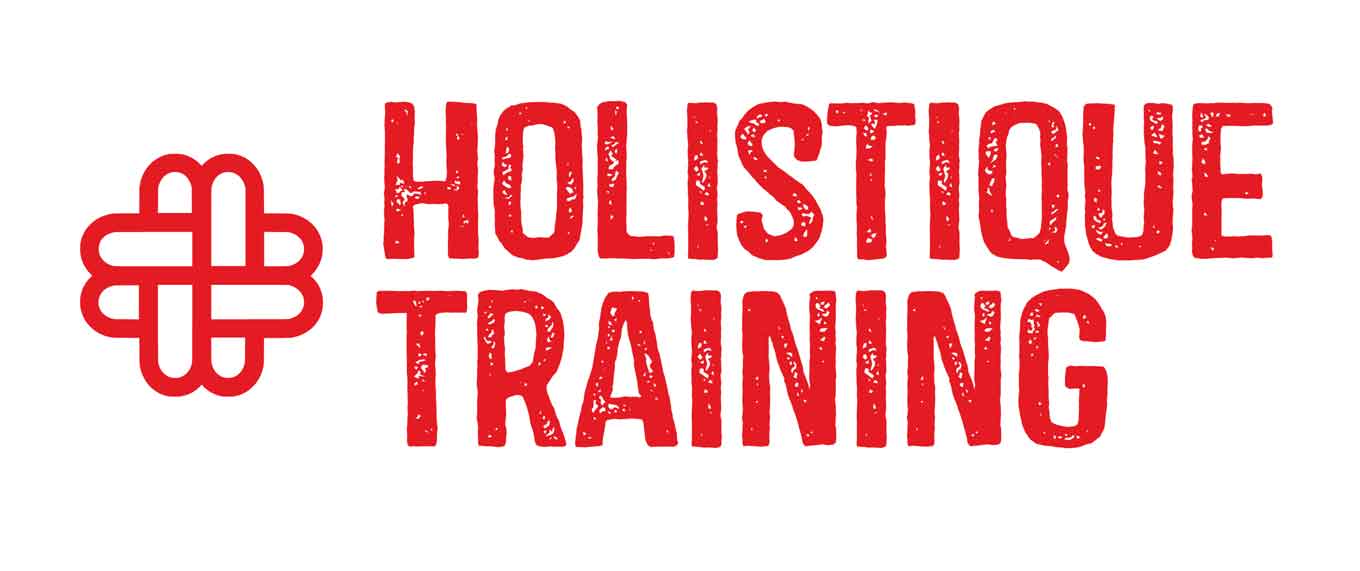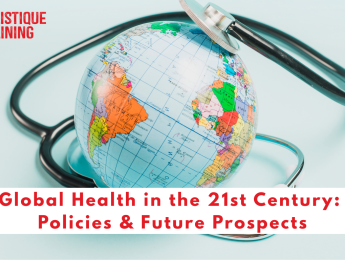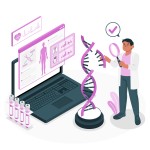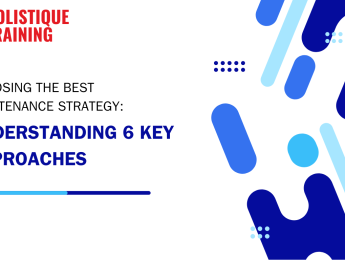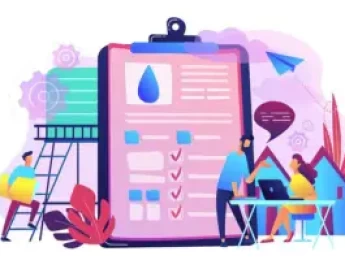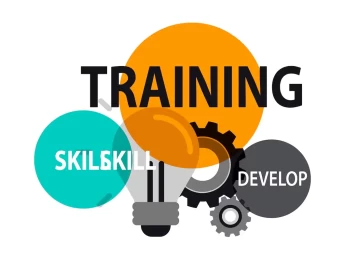Introduction
Global health is a crucial field that encompasses efforts to improve health outcomes worldwide through policies, technology, and international collaboration. Addressing global health challenges requires coordinated efforts from governments, international organizations, researchers, and healthcare professionals. From infectious disease control to the integration of innovative technologies and diplomatic initiatives, global health strategies shape the well-being of populations worldwide. This article explores various aspects of global health, focusing on policies for infectious disease control, the role of technology, challenges facing global health, and the significance of global health diplomacy in managing health crises and international relations.
Difference Between Global Health and Public Health
While global health and public health share common goals, they differ in scope and approach:
| Public Health | Global Health |
|---|---|
| Primarily focuses on the health of populations within a specific country or community. It deals with preventing diseases, promoting health education, and ensuring access to healthcare services at a national or regional level | Addresses health issues that transcend national boundaries and require international cooperation. It emphasizes global challenges such as pandemics, health inequalities, and access to essential medicines |
In essence, public health operates within national frameworks, while global health seeks cross-border solutions to enhance health equity worldwide.
Challenges Facing Global Health Today
Despite significant advancements, global health continues to face numerous challenges:
1. Emerging and Re-Emerging Infectious Diseases:
Outbreaks such as COVID-19, Ebola, and Zika virus demonstrate the persistent threat of infectious diseases. Rapid urbanization, climate change, and globalization contribute to the spread of pathogens.
2. Non-Communicable Diseases (NCDs):
Conditions such as cardiovascular diseases, cancer, diabetes, and respiratory diseases have become leading causes of death worldwide according to WHO. Lifestyle factors like poor diet, lack of physical activity, and tobacco use exacerbate these diseases.
3. Healthcare Disparities:
Socioeconomic inequalities result in unequal access to healthcare services. Many low- and middle-income countries (LMICs) struggle with inadequate healthcare infrastructure, shortages of medical professionals, and limited access to essential medicines.
4. Climate Change and Environmental Health:
Climate change increases health risks through rising temperatures, extreme weather events, and the spread of vector-borne diseases such as malaria and dengue fever.
5. Weak Health Systems and Infrastructure:
Many developing countries lack robust healthcare systems capable of responding to public health crises. Inadequate funding, poor governance, and corruption further weaken these systems.
6. Antimicrobial Resistance (AMR):
The overuse and misuse of antibiotics have led to the rise of drug-resistant infections, posing a major threat to global health security.
7. Mental Health Crisis:
Mental health issues are often overlooked, especially in low-resource settings. Stigma, lack of awareness, and insufficient mental health services prevent many from receiving adequate care.
Global Health and Sustainable Development
Global health is deeply connected to the United Nations’ Sustainable Development Goals (SDGs), particularly Goal 3: Good Health and Well-Being. Achieving sustainable global health requires addressing social, economic, and environmental determinants of health.
Key Aspects of Global Health and Sustainable Development:
- Universal Health Coverage (UHC): Ensuring that all individuals receive essential healthcare services without financial hardship is a fundamental goal for sustainable global health.
- Health Equity and Social Determinants of Health: Factors such as education, income, and living conditions significantly impact health outcomes. Policies aimed at reducing inequalities contribute to better health for all.
- Environmental Health and Climate Resilience: Sustainable health strategies must integrate environmental protection, clean water access, and pollution control to mitigate health risks.
- Partnerships and Global Cooperation: Governments, non-governmental organizations (NGOs), private sectors, and international agencies must collaborate to develop effective global health policies and interventions.
Global Health Policies for Infectious Disease Control
Infectious disease control remains a top priority for global health initiatives, with policies aimed at preventing outbreaks, mitigating their impact, and ensuring equitable access to healthcare solutions. Organizations like the World Health Organization (WHO), the Centers for Disease Control and Prevention (CDC), and international NGOs collaborate to develop guidelines for managing diseases such as tuberculosis, HIV/AIDS, malaria, and, more recently, COVID-19.
Infectious disease control is a fundamental aspect of global health, requiring coordinated policies and strategies to prevent outbreaks, minimize transmission, and reduce mortality. Below is a more detailed explanation of the key policies used to combat infectious diseases:
1. Vaccination Programs
Vaccination is one of the most effective public health measures for preventing infectious diseases. Immunization programs involve the mass administration of vaccines to protect individuals and communities from dangerous pathogens.
- Purpose:
Vaccines stimulate the immune system to recognize and fight specific viruses or bacteria, preventing infection or reducing disease severity.
- Examples:
- Polio Eradication Efforts: The Global Polio Eradication Initiative (GPEI) has significantly reduced polio cases worldwide through mass immunization campaigns.
- Measles Vaccination: Routine childhood immunization with the measles, mumps, and rubella (MMR) vaccine has saved millions of lives.
- COVID-19 Vaccination: The rapid development and global distribution of COVID-19 vaccines, through initiatives like COVAX, helped curb the pandemic by reducing severe cases and hospitalizations.
- Challenges:
Vaccine hesitancy, misinformation, lack of infrastructure in developing countries, and logistical difficulties in reaching remote areas.
2. Surveillance and Early Warning Systems
Disease surveillance is critical for detecting and responding to outbreaks before they escalate into epidemics or pandemics. Governments and international health organizations use advanced surveillance systems to monitor disease trends and predict potential outbreaks.
- Purpose:
To identify disease patterns, track new and existing infections, and enable a rapid response to emerging threats.
- Methods Used:
- Epidemiological Data Collection: Health authorities gather data from hospitals, laboratories, and research institutions to monitor disease prevalence.
- Predictive Analytics and AI: Machine learning and artificial intelligence analyze data to forecast potential outbreaks and assess risk levels.
- Global Health Networks: Organizations like the World Health Organization (WHO) and the Centers for Disease Control and Prevention (CDC) coordinate surveillance efforts and share data across countries.
- Example:
The Global Influenza Surveillance and Response System (GISRS) tracks flu strains worldwide to develop effective vaccines for each flu season.
- Challenges:
Inadequate funding, lack of trained personnel, data privacy concerns, and political resistance to transparent reporting.
3. Quarantine and Travel Restrictions
Quarantine and travel restrictions are public health measures used to prevent the spread of highly contagious diseases by limiting the movement of infected or potentially exposed individuals.
- Purpose:
To slow down disease transmission, protect unaffected populations, and allow healthcare systems time to prepare.
- Examples:
- COVID-19 Lockdowns and Travel Bans: Many countries imposed travel bans, social distancing measures, and lockdowns to control the spread of COVID-19.
- Ebola Outbreak Containment: During the West African Ebola outbreak (2014-2016), affected individuals were isolated, and travel restrictions were enforced to limit cross-border spread.
- Implementation Methods:
- Isolation of Infected Patients: Hospitals and health centers separate infected individuals from healthy populations.
- Mandatory Quarantine for Travelers: Some countries require travelers from high-risk areas to undergo quarantine before entering.
- Closure of High-Risk Areas: Lockdowns in disease hotspots prevent mass gatherings and slow transmission.
- Challenges:
Economic impact, public resistance, ethical concerns about restricting freedoms, and the need for balanced implementation.
4. Antimicrobial Resistance (AMR) Strategies
Antimicrobial resistance (AMR) occurs when bacteria, viruses, fungi, and parasites evolve and become resistant to the drugs designed to kill them. This is a growing global threat, as it makes infections harder to treat and increases the risk of disease spread, severe illness, and death.
- Purpose:
To promote the responsible use of antibiotics, invest in new drug development, and implement policies that slow the emergence of drug-resistant pathogens.
- Key Strategies:
- Antibiotic Stewardship Programs: Encouraging healthcare providers to prescribe antibiotics only when necessary and educating patients on the dangers of overuse.
- Surveillance of Resistant Strains: Monitoring drug-resistant infections globally to track their spread and develop targeted interventions.
- Investment in Research and Development: Governments and pharmaceutical companies work together to develop new antibiotics and alternative treatments.
- Public Awareness Campaigns: Educating communities about the risks of self-medicating with antibiotics and improper use.
- Examples:
- The WHO’s Global Action Plan on AMR: A global initiative to monitor and combat antimicrobial resistance.
- Regulations on Antibiotic Use in Agriculture: Many countries have restricted the use of antibiotics in livestock to prevent resistance from spreading to humans.
- Challenges:
The high cost of developing new antibiotics, lack of regulatory enforcement in some countries, and limited public awareness.
NGOs like Doctors Without Borders (MSF) and the Global Fund support these initiatives by providing medical aid, funding research, and advocating for policy changes.
Role of Technology in Global Health Solutions
Technological advancements have revolutionized the field of global health, providing innovative solutions to age-old challenges. The integration of digital health tools, telemedicine, and artificial intelligence (AI) has significantly improved healthcare accessibility and efficiency.
Notable Technological Innovations in Global Health:
- Telemedicine and Mobile Health Apps: Platforms like Teladoc enables remote consultations, reducing the need for physical healthcare visits, especially in underserved areas.
- AI and Big Data: Machine learning algorithms help predict disease outbreaks, optimize resource allocation, and personalize treatment plans.
- Wearable Health Devices: Smartwatches and biosensors monitor vital signs, providing early warnings for conditions like heart disease and diabetes.
- Blockchain in Healthcare: Secure patient data management ensures transparency and trust in global health initiatives.
- Drones for Medical Supply Delivery: Organizations like Zipline use drones to transport vaccines, blood supplies, and essential medicines to remote regions.
By leveraging these technologies, NGOs are able to reach vulnerable populations more efficiently, ensuring better health outcomes worldwide.
Global Health Challenges in Rural Communities
Rural areas across the globe face unique health challenges due to limited infrastructure, economic disparities, and inadequate healthcare access. These challenges exacerbate health inequalities and hinder disease control efforts.
Major Health Challenges in Rural Communities:
- Limited Healthcare Facilities: Many rural areas lack hospitals, clinics, and qualified medical professionals.
- Poor Sanitation and Clean Water Access: Contaminated water sources contribute to widespread diseases like cholera and typhoid.
- Malnutrition and Food Insecurity: Lack of access to nutritious food leads to severe health issues, particularly among children and pregnant women.
- Transportation Barriers: Long distances to the nearest healthcare facility result in delayed treatments and higher mortality rates.
NGOs such as Partners In Health (PIH) and the Bill & Melinda Gates Foundation work to improve healthcare accessibility in these areas through mobile clinics, community health worker programs, and infrastructure development projects.
Global Health Diplomacy and International Relations
Global health diplomacy refers to the intersection of public health and international relations, where governments, NGOs, and multinational organizations collaborate to address health challenges. Diplomatic efforts help shape health policies, secure funding, and foster global partnerships.
Case Studies in Global Health Diplomacy:
- The Ebola Response (2014-2016): International organizations like WHO and MSF played a crucial role in containing the outbreak through coordinated response strategies and vaccine development efforts.
- The COVID-19 Vaccine Distribution: The COVAX initiative, led by Gavi, WHO, and the Coalition for Epidemic Preparedness Innovations (CEPI), aimed to ensure equitable vaccine distribution, particularly in low-income countries.
- HIV/AIDS Global Fund Initiative: The Global Fund to Fight AIDS, Tuberculosis, and Malaria has mobilized resources and facilitated international cooperation to combat these diseases effectively.
By fostering diplomatic ties, nations can create a more unified approach to tackling health crises and ensuring equitable healthcare access worldwide.
Global Health Diplomacy Strategies During Pandemics
Pandemics present unique challenges that require swift and effective global health diplomacy strategies. These strategies focus on international collaboration, resource allocation, and public health communication.
Key Strategies for Pandemic Response:
- Multilateral Agreements: Nations must work together to create agreements that facilitate vaccine production and distribution.
- Data Sharing and Transparency: Real-time sharing of epidemiological data improves outbreak tracking and response efficiency.
- Funding and Resource Mobilization: NGOs and governments must allocate sufficient funds for pandemic preparedness and response efforts.
- Public Awareness Campaigns: Educating the public on preventive measures ensures compliance with health guidelines.
NGOs such as the Red Cross and World Vision play an essential role in pandemic response by providing humanitarian aid, supporting vaccination campaigns, and ensuring that marginalized populations receive medical care.
Global Health Diplomacy and Non-Governmental Organizations
NGOs are pivotal players in global health diplomacy, often acting as intermediaries between governments, international organizations, and local communities. Their flexibility, grassroots connections, and advocacy capabilities enable them to address health disparities effectively.
How NGOs Contribute to Global Health Diplomacy?
- Advocacy and Policy Influence: NGOs push for health policy reforms and increased funding for global health initiatives.
- Humanitarian Assistance: Organizations like MSF and the International Rescue Committee (IRC) provide emergency medical aid in crisis-affected regions.
- Capacity Building: NGOs invest in training healthcare professionals and improving health infrastructure in developing countries.
- Public-Private Partnerships: Collaborations between NGOs, pharmaceutical companies, and governments help accelerate medical research and distribution efforts.
By engaging in global health diplomacy, NGOs ensure that vulnerable populations receive the healthcare support they need while influencing policies that shape the future of public health.
Future of Global Health
The future of global health relies on several key factors, including technological innovations, policy reforms, and international cooperation. The main areas of focus include:
1.Advancements in Digital Health:
Technologies like telemedicine, artificial intelligence (AI), and big data analytics are transforming healthcare delivery, enhancing diagnostics, and improving disease surveillance.
2. Personalised Medicine and Genomics:
Precision medicine, driven by genetic research, is enabling targeted treatments and preventive healthcare strategies tailored to individual genetic profiles.
3. Strengthening Global Health Security:
Investing in early warning systems, rapid response mechanisms, and resilient health infrastructure is essential for preparing against future pandemics and health emergencies.
4. Innovative Financing for Healthcare:
Sustainable funding models, such as public-private partnerships and international health funds, are crucial for supporting healthcare initiatives, particularly in low- and middle-income countries (LMICs).
5. Policy Reforms and Governance:
Strengthening global health governance through transparent policies, equitable resource distribution, and comprehensive health regulations will be key in reducing disparities and ensuring universal access to care.
Conclusion
Global health is a multidimensional field that requires collective efforts from governments, NGOs, and private organizations to address pressing health issues worldwide. Infectious disease control policies, technological innovations, rural health initiatives, and diplomatic strategies all play essential roles in creating sustainable health solutions. NGOs, in particular, have proven to be indispensable in filling the gaps left by governmental efforts, advocating for policy changes, and providing direct medical assistance.
As global health challenges continue to evolve, individuals and organizations must take action to support these efforts. Whether through donations, volunteering, policy advocacy, or spreading awareness, everyone has a role to play in promoting global health equity. Governments must prioritize healthcare funding, international organizations should foster stronger diplomatic collaborations, and technological innovations should be leveraged for the greater good.
A healthier world is within reach, but it requires collective responsibility and commitment. The time to act is now—support global health initiatives, champion policies that prioritize health equity, and contribute to a future where quality healthcare is accessible to all, regardless of geography or socioeconomic status.
Don't forget to Subscribe to our newsletter for weekly insights or enroll in our certified courses to take your expertise to the next level!
